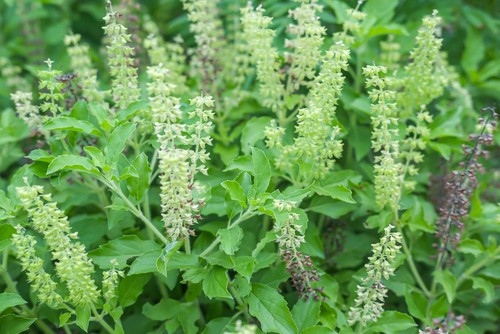Basil is a popular herb that is commonly used in cooking, especially in Italian and Mediterranean cuisine. Its fresh taste and aroma make it a favorite among chefs and home cooks alike. However, basil plants are not immune to problems, and one of the most common issues is the Basil stalk turning brown.
Understanding basil plants is crucial to identifying the causes of brown stalks. Basil plants require plenty of sunlight, water, and well-draining soil to thrive. They are also susceptible to pests and diseases, which can cause discoloration of the stalks. Knowing the signs and symptoms of ailing basil plants is essential in preventing further damage.
There are several reasons why basil stalks turn brown, including fungal infections, root rot, and natural maturity. Preventive measures, such as pruning and proper watering, can help keep basil plants healthy.
Treatment options, including fungicides and organic remedies, can be used to address the issue. Understanding the causes and symptoms of basil stalks turning brown is crucial in keeping the herb healthy and thriving.
Key Takeaways
- Understanding the needs of basil plants is crucial in preventing brown stalks.
- Brown stalks can be caused by fungal infections, root rot, and natural maturity.
- Proper preventive measures and treatment options can help keep basil plants healthy.
Also see:
- Bromeliad Leaf Tips Turning Brown:
- Bougainvillea Leaves Turning Brown:
- Bougainvillea Flowers Turning Brown:
Understanding Basil Plants
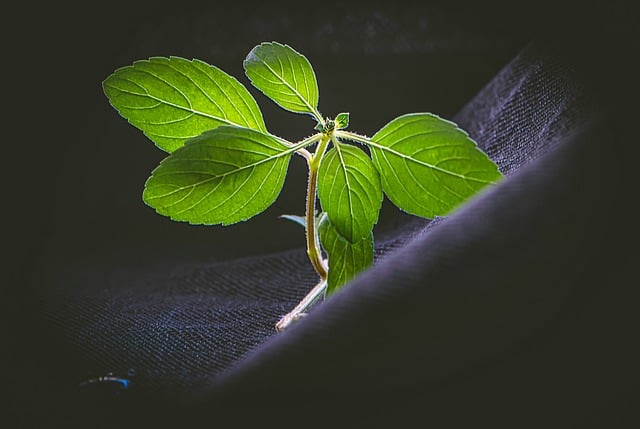
Basil plants are a popular herb used in various cuisines worldwide. They are easy to grow and provide a fresh and aromatic flavor to dishes. However, sometimes the basil stalks may turn brown, which can be a cause for concern. In this section, we will discuss the anatomy and growth habits of basil plants to understand why the stalks may turn brown.
Anatomy of Basil Plants
Basil plants belong to the mint family and have square stems with green, fragrant leaves. The leaves are arranged in pairs and have a serrated edge. Basil plants can grow up to 2 feet tall and produce small white or purple flowers. The roots of basil plants are shallow and do not require deep soil to grow.
Growth Habits of Basil Plants
Basil plants require warm temperatures, plenty of sunlight, and well-drained soil to grow. They can be grown indoors or outdoors, and they thrive in containers or garden beds. Basil plants are annuals, which means they complete their life cycle in one year. They grow quickly, and the leaves can be harvested within a few weeks of planting.
Reasons for Basil Stalks Turning Brown
There are several reasons why basil stalks may turn brown. Overwatering is a common cause of brown stalks, as it can lead to root rot and fungal infections. Underwatering can also cause the stalks to dry up and turn brown.
Additionally, temperature stress, pest infestations, and diseases can cause basil stalks to turn brown. It is essential to identify the cause of the problem and take appropriate measures to prevent further damage to the plant.
Basil Stalk Turning Brown – 4 Common Problems
Basil is a popular herb used in many culinary dishes. It is also a relatively easy herb to grow, making it a favorite among gardeners. However, basil plants can sometimes develop brown stalks, which can be a sign of an underlying issue. Here are some common causes of basil stalk turning brown.
1. Over Watering
One of the most common causes of brown basil stalks is over watering. Basil plants require regular watering, but too much water can lead to root rot and other fungal diseases. When the roots are damaged, the plant cannot absorb nutrients and water properly, leading to brown stalks and leaves.
To prevent over watering, ensure that the soil is well-draining and water the plant only when the top inch of soil is dry. Avoid watering the plant too frequently or leaving it in standing water.
2. Under Watering
Under watering can also cause basil stalks to turn brown. When the plant does not receive enough water, it will start to wilt, and the leaves and stalks will turn brown. This can also make the plant more susceptible to pests and diseases.
To prevent under watering, ensure that the soil is moist but not waterlogged. Water the plant regularly, especially during hot and dry weather.
3. Fungal Diseases
Fungal diseases can also cause basil stalks to turn brown. These diseases can be caused by over watering, poor air circulation, or contaminated soil. Common fungal diseases that affect basil plants include Fusarium wilt, downy mildew, and powdery mildew.
To prevent fungal diseases, ensure that the plant is growing in well-draining soil and has good air circulation. Avoid over watering the plant and remove any infected leaves or stalks immediately.
4. Pest Infestation
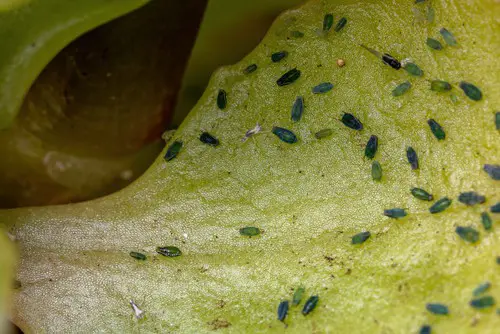
Pest infestations can also cause basil stalks to turn brown. Common pests that affect basil plants include aphids, spider mites, and whiteflies. These pests can damage the leaves and stalks, leading to brown discoloration.
To prevent pest infestations, inspect the plant regularly for signs of pests and remove any infected leaves or stalks immediately. Consider using natural pest control methods, such as neem oil or insecticidal soap, to keep pests at bay.
Symptoms of Basil Stalk Turning Brown
When a basil plant’s stalks start turning brown, it is usually a sign of a problem. Here are some symptoms that may indicate that your basil plant is experiencing issues:
1. Change in Leaf Color
One of the first signs of a problem with a basil plant is a change in leaf color. The leaves may start to turn yellow or brown, or they may develop spots or patches. If you notice any of these changes, it may be a sign that your basil plant is not getting enough water or nutrients.
2. Wilted Leaves
Another symptom of a problem with a basil plant is wilted leaves. If the leaves are droopy and limp, it may be a sign that the plant is not getting enough water. However, if the leaves are wilted and dry, it may be a sign that the plant is getting too much water.
3. Stunted Growth
If your basil plant is not growing as quickly as it should be, it may be a sign that there is a problem. Stunted growth can be caused by a variety of factors, including lack of nutrients, lack of water, or pest infestations.
If you notice any of these symptoms in your basil plant, it is important to take action as soon as possible. By addressing the problem quickly, you can help ensure that your basil plant stays healthy and continues to thrive.
Preventive Measures
To prevent basil stalks from turning brown, there are a few key preventive measures to take. Proper watering, adequate sunlight, and good soil drainage are all crucial factors to consider when caring for basil plants.
1. Proper Watering

Overwatering or underwatering can cause basil stalks to turn brown. It is essential to water basil plants regularly, but not excessively. A good rule of thumb is to water the plant when the top inch of soil feels dry to the touch. It is also important to avoid getting water on the leaves, as this can lead to fungal growth.
2. Adequate Sunlight
Basil plants require plenty of sunlight to thrive. They should be placed in an area that receives at least six hours of direct sunlight per day. If the plant is not receiving enough sunlight, the stalks may turn brown and the leaves may wilt.
3. Good Soil Drainage
Basil plants require well-draining soil to prevent the roots from becoming waterlogged. If the soil is too dense or compacted, it may be necessary to amend it with sand or perlite to improve drainage. Additionally, planting basil in a raised bed or container with drainage holes can help ensure proper soil drainage.
Treatment Options
When basil stalks turn brown, there are several treatment options available to save the plant. The three main treatment options are the use of fungicides, pest control methods, and pruning affected parts.
Use of Fungicides
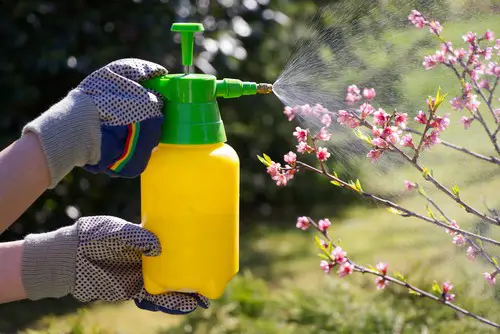
If the brown stalks are caused by a fungal infection, then using a fungicide may be necessary. Fungicides are chemicals that can be sprayed on the plant to kill the fungus. It is important to choose a fungicide that is specifically designed for basil plants. Follow the instructions on the fungicide label carefully to avoid damaging the plant.
Pest Control Methods
If the brown stalks are caused by pests, then using pest control methods may be necessary. There are several pests that can attack basil plants, including aphids, spider mites, and whiteflies.
One effective pest control method is to use insecticidal soap. Insecticidal soap is a natural pesticide that is safe for humans and pets. It works by suffocating the pests. Follow the instructions on the insecticidal soap label carefully to avoid damaging the plant.
Pruning Affected Parts
If the brown stalks are caused by other factors, such as overwatering or underwatering, then pruning affected parts may be necessary. Pruning involves cutting off the affected parts of the plant to prevent further damage.
When pruning basil, it is important to use clean, sharp scissors. Cut the stalks just above a leaf node, which is where a leaf attaches to the stem. This will encourage new growth and help the plant recover.
Conclusion
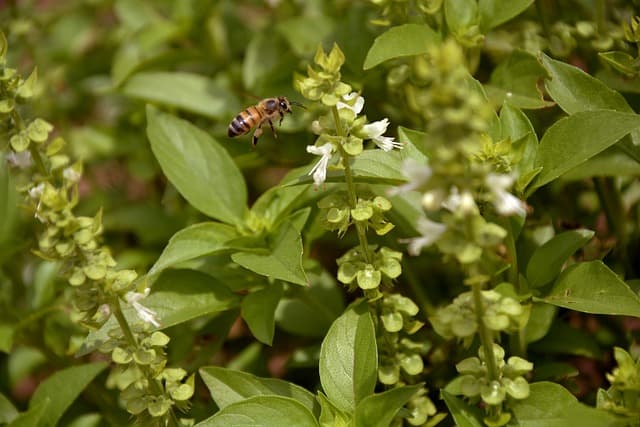
Basil stems turning brown can be a cause for concern for gardeners and herb enthusiasts alike. While it is not entirely normal for basil stems to turn brown, it is not always a sign of a serious problem. In some cases, the brown stems could be a natural part of the plant’s life cycle.
However, if the brown stems are accompanied by other symptoms such as wilting leaves or a foul odor, it could be a sign of a fungal infection or root rot. In such cases, it is important to act quickly to save the plant.
To prevent basil stems from turning brown prematurely, gardeners should ensure that the plant is receiving adequate water and sunlight. Overwatering can lead to root rot, while underwatering can cause the plant to dry out and die.
If a gardener notices brown stems on their basil plant, the first step is to remove all the leaves from the plant. This will give the plant the opportunity to reproduce fresh food and plant material that can be used to support new growth. Additionally, gardeners should ensure that the soil is well-draining and that the plant is not overcrowded with other plants.
Overall, while basil stems turning brown can be a cause for concern, it is not always a sign of a serious problem. By taking the appropriate steps, gardeners can help their basil plants thrive and produce fresh, flavorful herbs for use in the kitchen.

Hey, I’m Lisa and I’ve been an avid gardener for over 30 years. I love writing, talking and living in the garden! Feel free to connect with me on my socials below

